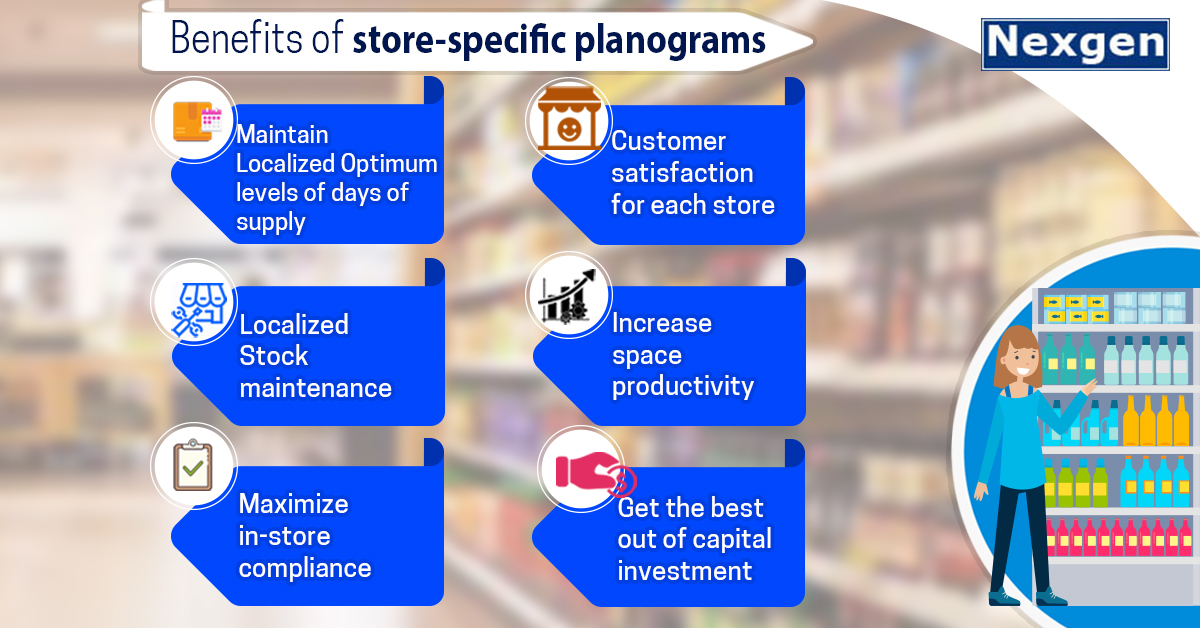A planogram is a visual merchandising tool that dictates the placement of products in a retail store or on a store shelf. The primary objective of any planogram software is to have the right product, in the right place, in the right quantity, at the right price and at the right time. Additionally, planograms are vital for retailers operating from multiple stores because they help create a uniform store appearance.
Traditionally, retail stores dealing with simple product categories or similar assortments were given the same planograms. However, these planograms failed to show variation in actual sales from store to store and the facings of each item are largely influenced by the average unit rate of sale. Generic planograms are created based on the assumption that the demands of each store are the same. This one size fits all approach can cause problems at store levels, resulting in improper execution of merchandiser’s vision and poor use of the available store space.
For example, while 5 facings of product A gives us target days of supply on the shelf for most of our stores, in some stores it is the slowest moving product and 5 facings give far too many days of supply. In another store, this product is more popular. And 5 facings many not give enough to prevent out of stocks. So the use of generic planograms gives equal days of supply on shelves in stores causing out-of-stock and wastages.
The solution is to generate store-specific planograms that optimize the facing based on demand in each store. With store-specific planograms, retailers can accurately maintain the desired merchandising flow. Such planograms give retailers the ability to understand and satisfy diverse consumer demands and maximize sales opportunities. Additionally, it also helps retailers and manufacturers to improve their competitive position and respond better to market trends.
So what are the benefits of store-specific planograms?
- Out of stocks will be reduced, resulting in improved sales. Products placed in the assortment will always be available for customers to buy. Reducing out of stocks also results in satisfied customers. They will be more likely to fulfill their shopping needs.
- Store-specific planograms help in maintaining optimum levels of days of supply. Fewer items will have too many days of supply which is particularly important for fast-moving product categories.
- Item quantities on the shelf can be automatically fed into a sales-based ordering replenishment system thereby streamlining the process for opening and closing orderable assortments in the supply chain.

- The labor required to replenish planograms with more equal days of supply is lower and easier to plan for.
- Store-specific planograms are vital in maximizing in-store compliance resulting in an accurate understanding of product distribution. Moreover, it helps in streamlining store layout and floor planning that helps retailers in increasing space productivity and optimizing capital investment.
Overview of Nexgen POG
Nexgen POG is an easy to use cloud-based visual merchandising tool designed for quick and efficient planogramming. It comes with an array of features including customizable templates, bulk upload images, easy compliance, report generation and much more. Its interface is extremely user-friendly and planograms can be designed by easily dragging and dropping the products. Employees can access Nexgen POG by logging in with their username and password. Anyone from an expert to novice can create planograms that will increase product visibility and sales- making it a highly preferred choice for businesses globally.
Get Your Free Trial Now